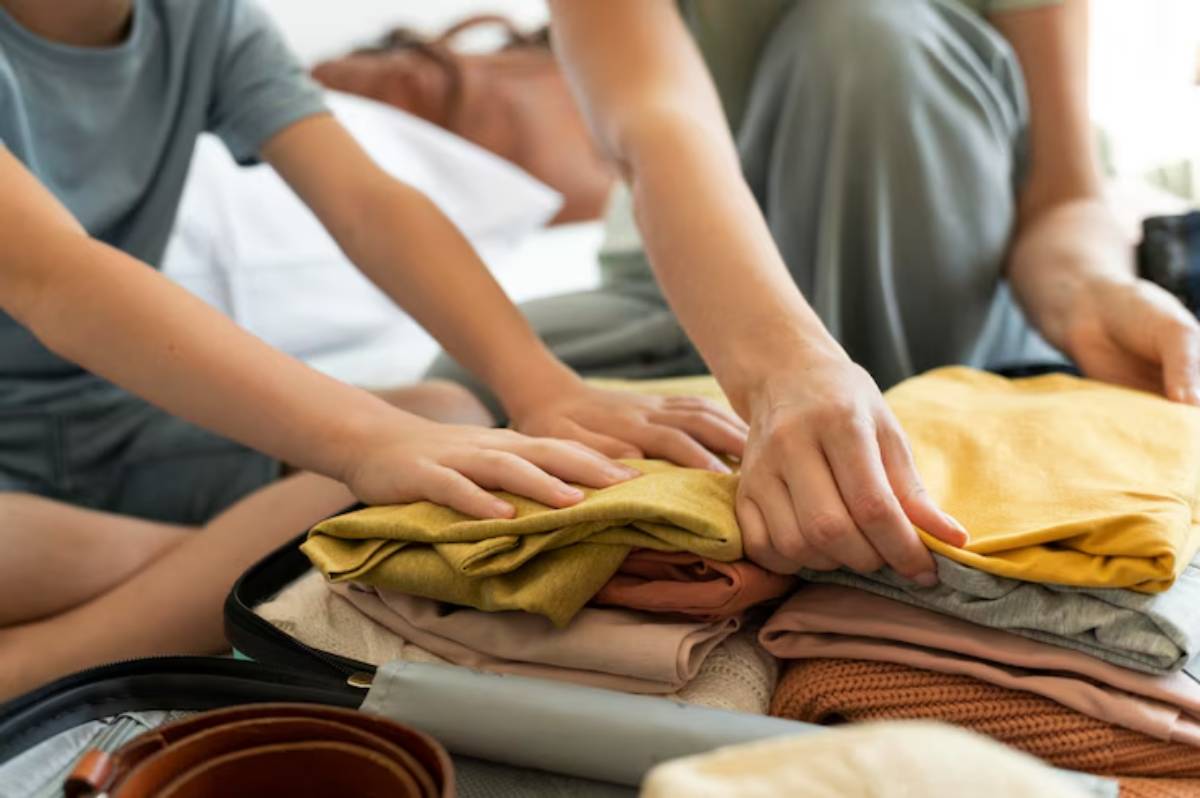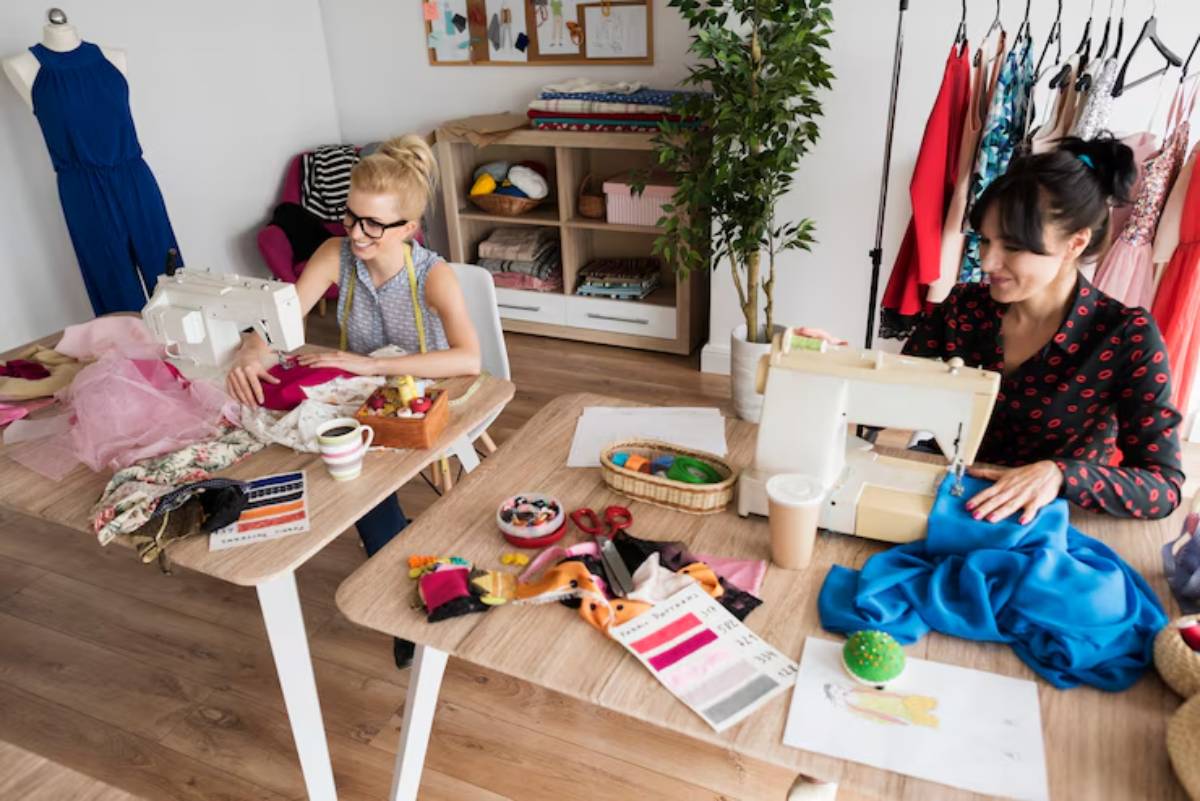The Fashion Blog

How to Host a Clothing Swap Party
Fashion Fun with a Sustainable Twist
Tired of fast fashion’s empty promises and overstuffed wardrobes? You’re not alone. Many of us crave a more sustainable, budget-friendly way to refresh our style, without harming the planet or our bank accounts.
Enter the clothing swap party: the ultimate way to declutter, socialise, and update your wardrobe guilt-free.
Clothing swaps are more than just a fun night in. They’re part of a growing sustainable fashion community where conscious consumers come together to reduce waste, rethink shopping habits, and embrace circular style. And the best part? They’re easy to host — even if you’ve never done anything like it before.
In this guide, you’ll learn exactly how to plan and host a successful clothing swap event — from guest lists and rules to styling stations and donation strategies. Whether you want to keep it cosy with friends or organise a larger community event, these outfit exchange ideas will help you get started.
Why Host a Clothing Swap Party?

1. Refresh Your Wardrobe Without Spending a Penny
Instead of buying new clothes, swap pieces you no longer wear for something new-to-you. It’s a smart way to try new styles or sizes — especially when trends shift or your lifestyle changes.
2. Reduce Textile Waste
In the UK alone, around 300,000 tonnes of clothing ends up in landfill every year (WRAP). Swapping helps keep clothes in circulation longer, reducing fashion’s footprint.
3. Build Community Through Fashion
Swapping is inherently social. It brings people together for an experience that’s personal, positive, and purposeful. It’s about connection, not consumption.
4. Promote Mindful Consumption
By engaging in the act of giving and receiving, you begin to understand the true value of your clothes. It shifts your mindset from owning more to valuing better.
Planning Your Swap: Step-by-Step

Step 1: Choose a Venue
Think about how many guests you want to invite. For smaller gatherings, a living room or garden is perfect.
If you’re planning something larger, consider:
- Community halls
- Local cafés (off-hours)
- Co-working spaces
- University common rooms
Look for venues with enough space to hang and display clothing, and ideally, a few mirrors or changing areas.
Step 2: Create the Guest List
Try to invite a mix of people with diverse styles and body types, so everyone has something to find.
You could limit your swap to:
- Friends and family
- Your book club, running group, or yoga studio
- Your workplace
- A neighbourhood or building-wide invite
Around 8 to 20 guests is a manageable number for an at-home swap.
Step 3: Set Clear Guidelines
To avoid confusion or disappointment, communicate your swap rules ahead of time.
Some basics:
- Clothes must be clean, gently worn, and damage-free
- Limit the number of items (e.g., bring 5–10)
- Allow accessories, shoes, and bags if you like
- Undergarments and swimwear should be excluded
Encourage guests to bring seasonal items or style-specific themes, like officewear or party looks.
Step 4: Promote Your Event
If you’re planning a larger or public event, promote it on:
- Social media (Facebook, Instagram, Nextdoor)
- Local community boards
- Sustainable fashion forums
- University campuses or cafes
Create a simple but inviting flyer or post with the date, location, theme, and what guests should bring.
Set-Up & Decor: Make It Easy and Inspiring

1. Racks, Tables & Baskets
Use clothing racks or ropes with hangers to display items neatly. Foldable tables or even sofas can act as display zones.
Group clothes by:
- Size
- Category (e.g., tops, bottoms, dresses)
- Colour or occasion
2. Changing Space
Designate a private area for trying things on — a spare bedroom, bathroom, or curtained-off corner with a full-length mirror.
3. Style Station
Set up a corner with mirrors, belts, scarves, and shoes so guests can play with looks. It’s fun and adds a boutique feel.
4. Sustainable Touches
- Serve snacks with reusable or compostable plates
- Decorate with thrifted vases, plants, or candles
- Play a chill playlist to keep the energy flowing
Swap Flow: Keep It Fair & Fun
1. Ticket or Token System
To keep things fair, give guests 1 token per item they bring. They can then “spend” those tokens on clothes they want to take home. This avoids the scramble and ensures everyone gets a chance to find something they love.
2. The Preview Period
Let guests browse everything before swapping begins. Offer drinks and chats so everyone relaxes. Then, start the swap in waves — either by drawing names or group rounds.
3. Try-On Encouraged
Make it clear that trying on clothes is totally okay. It helps reduce unwanted take-homes and ensures people leave with items they’ll actually wear.
What to Do with Unclaimed Clothes
Even with a successful swap, there will likely be leftovers. Don’t toss them — donate them ethically or plan a reuse project.
Options include:
- Local charity shops (Shelter, Oxfam, TRAID)
- Refugee centres or women’s shelters
- Fabric recycling programmes
- Upcycling sessions for items beyond repair
If you’re feeling crafty, take inspiration from our guide on DIY upcycled denim: turn jeans into something new — a great follow-up activity after a swap.
Extra Ideas to Elevate the Experience
1. Sustainable Fashion Talk
Invite a speaker or local eco-blogger to talk briefly about ethical fashion, capsule wardrobes, or textile waste. This will add value and educate.
2. Mini Mending Bar
Set up a small mending station with needles, patches, and buttons. Encourage guests to fix minor flaws and breathe new life into “almost perfect” items.
3. Outfit Contest
Have a fun challenge like “Best Styled Look” using only swap items. Offer a small prize, like a tote bag or eco lip balm.
4. Take-Home Eco Packs
Send guests home with a small eco-friendly goodie bag — think bamboo toothbrushes, fabric care tips, or a discount code to a local sustainable brand.
Making Swaps Part of Your Lifestyle
Hosting a clothing swap party doesn’t have to be a one-off event.
You can:
- Make it seasonal: swap winter coats in October, light layers in April
- Go digital: set up a private Facebook group or WhatsApp thread to exchange regularly
- Take it public: partner with local businesses or councils to host larger events
Building a community around conscious fashion has ripple effects—not just on the environment but also on how we support each other.
If you’re also exploring digital wardrobe alternatives, read our guide on the rise of fashion rental services — another clever way to refresh your look sustainably.
Conclusion: Swap, Style, and Share
A clothing swap party is more than just a trade — it’s a celebration of creativity, community, and conscious living. It shows that fashion doesn’t need to be wasteful to be joyful. With a little planning and a lot of heart, you can host an event that inspires your friends, extends the life of clothes, and sparks new conversations.
So what are you waiting for?
Start by texting your group chat. Pick a date. Sort your wardrobe.
Once you host your first clothing swap, we guarantee it won’t be your last.
We’d love to hear your stories.









